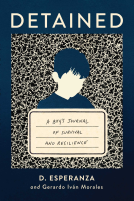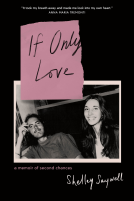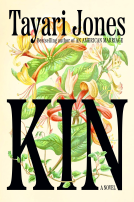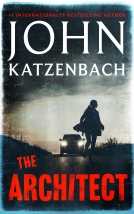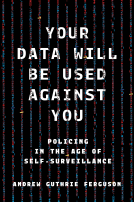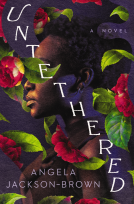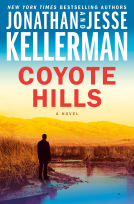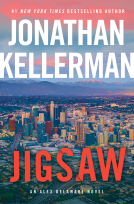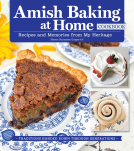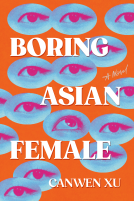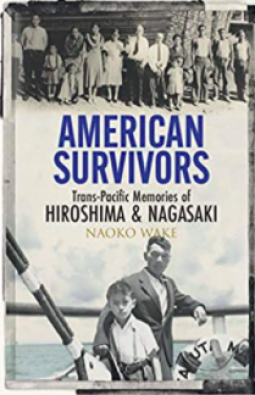
American Survivors
Trans-Pacific Memories of Hiroshima and Nagasaki
by Naoko Wake
This title was previously available on NetGalley and is now archived.
Send NetGalley books directly to your Kindle or Kindle app
1
To read on a Kindle or Kindle app, please add kindle@netgalley.com as an approved email address to receive files in your Amazon account. Click here for step-by-step instructions.
2
Also find your Kindle email address within your Amazon account, and enter it here.
Pub Date May 21 2021 | Archive Date Jun 21 2021
Talking about this book? Use #AmericanSurvivors #NetGalley. More hashtag tips!
Description
American Survivors is a fresh and moving historical account of U.S. survivors of the Hiroshima and Nagasaki atomic bombings, breaking new ground not only in the study of World War II but also in the public understanding of nuclear weaponry.
A truly trans-Pacific history, American Survivors challenges the dualistic distinction between Americans-as-victors and Japanese-as-victims often assumed by scholars of the nuclear war. Using more than 130 oral histories of Japanese American and Korean American survivors, their family members, community activists, and physicians - most of which appear here for the first time - Naoko Wake reveals a cross-national history of war, illness, immigration, gender, family, and community from intimately personal perspectives.
American Survivors brings to light the history of Hiroshima and Nagasaki that connects, as much as separates, people across time and national boundaries.
Advance Praise
"This deeply researched, sensitively analyzed, and beautifully written book rests on a source base of 132 interviews with American atomic-bomb survivors. Wake respectfully shows the range of ways that these individuals navigated their complicated lives and made sense of the enormous tragedy at their center." Laura Hein, Harold H. and Virginia Anderson Professor of History, Northwestern University
"Ghostly figures, American survivors of their nation’s nuclear holocaust, speak for themselves and for those who failed to survive in profound utterances and silences, the living and the dead. Their haunting testimonies, in translation, speak of the unspeakable and of life - remembering, forging connections with families and other survivors, and working for peace in and across the Pacific. Indeed, as Naoko Wake astutely observes, nuclear holocaust is by definition a global phenomenon for all times.’" Gary Y. Okihiro, Professor Emeritus, Columbia University
"Naoko Wake’s American Survivors is a beautifully written portrayal of the traumas suffered by atomic bomb survivors of Hiroshima and Nagasaki. She offers lyrical depictions of the visceral experience and the profound significance of silence. The work also foregrounds the cross-national and gendered experience of being hibakusha and the ways in which they and their allies engaged in transnational forms of activism." Judy Tzu-Chun Wu, Professor of Asian American Studies, and Director of the Humanities Center, University of California, Irvine
Available Editions
| EDITION | Hardcover |
| ISBN | 9781108835275 |
| PRICE | $29.95 (USD) |
Average rating from 4 members
Featured Reviews
 Media/Journalist 188366
Media/Journalist 188366
“You know, when people ask me that, it’s hard to figure, really, which side I was on. Maybe I wasn’t, I don’t know. Maybe I was at a point where I didn’t care which side, really, because nobody cared for me.”
Since the end of the Cold War, public awareness of nuclear weapons has subsided and the subject is often treated as a niche topic of international security, diplomacy and history. Many mainstream documentaries and books cover failures of command-and-control , intelligence and technology. Furthermore, while debating deterrence and emerging complications related to AI and cyber security, it can be difficult to remember the human stories behind this threat especially if those stories have been critically neglected by historians. This is what makes American Survivors such an important new release from Cambridge University Press.
This trans-Pacific history presents the stories of Japanese-American and Korean-American survivors of the Hiroshima and Nagasaki atomic bombings. This includes US citizens who were in Japan at the time and those who arrived in the United States after the war. Previous studies have separated survivors by groups based on nationality, with little consideration to those who belong to several nations or feel affinity for multiple cultures.
Author Naoko Wake deftly covers topics such as immigration, citizenship, statelessness, colonialism, gender, community activism and medical ethics through the oral histories of victims, their families, activists and physicians. Collective memory and the use of silence are two other major themes of this book. Is talking therapeutic or does silence offer a near invisible sign of community support through hiding and healing? How do layered identities shape their “remembering of the explosion, destruction, and death?” How can women share their memories or their identity as a victim if they “would be disgraced if it became known she was a survivor?” What methods of community activism are perceived to be socially acceptable for women? How do activists push for change without reopening old wounds? How can such a diverse group of survivors work toward a shared goal without perpetuating stereotypes and old divisions? These questions as well as the experiences of US survivors have been neglected in the American, Japanese and Korean discourse, serving as a “counter-memory of the bomb.”
Our perceptions of World War II, especially within the Pacific theatre, include clearly defined national boundaries, with no consideration for dual-citizens or US citizens who were transferred to Japan after Pearl Harbor. The cross-national or ‘layered’ identities of many victims have gone virtually unrecognized. According to Wake, in December 1941, there were an estimated 20,000 American citizens in Japan. Many were first or second generation immigrants who had relocated to Japan for education, family responsibilities or retirement. Of those 20,000, 3,000-4,000 were in Hiroshima. Some Japanese-American families were used as hostages to be exchanged with American (I assume Caucasian) hostages. Neither country treated them well as “they became a target of national hysteria and cultural suspicion on both sides of the Pacific.”
Many Asian-American servicemen married victims while stationed in Japan and Korea, as it was a way for them to find a spouse and “a rare chance to do so for Asian-Americans in the pre Loving v. Virginia (1967) era.” The amount of border crossings and immigration flows between the United States, Japan and Korea were far greater than we think. Out of all of Japan, Hiroshima prefecture sent the largest number of immigrants to Hawaii and the US mainland. Hiroshima itself had an American import store for American foods. Wake brilliantly describes the culture shock of newly arrived Japanese-Americans in Japan, as they had never heard people walking in geta or sat on tatami. They wore denim and preferred coffee. One family managed to keep a stock of coffee throughout most of the war. Bullying of these new arrivals was commonplace as was the “homesickness” for the US amongst many dual citizens. One witness commented: “I went out and looked at the sunset…I thought about the smell of butter that I used to smell on Sundays. I looked up, only to see daikon radishes hanging there to dry. I felt lonely.” In the aftermath of the bombs, these survivors looked through the wreckage for American objects such as a Singer sewing machines. Others identified bodies due to their distinctive American clothing.
Japanese-Americans or Japanese citizens who had returned to Japan found fast employment after the war working for the US military due to their language skills and cross-cultural knowledge. However, many struggled due to insufficient Japanese language skills. While Japanese language schools were being created, Koreans in Japan experienced police attacks on their language schools, which is just one example of what is often a contradictory approach toward Korean culture. Koreans were often expected to assimilate totally or even pass as Japanese, while at the same time they were condemned for hiding their Korean heritage in hopes of achieving equal opportunities.
Treated as a perpetual other, the victims’ search for adequate medical care, recognition and financial assistance from various unconcerned governments shows how no government had taken responsibility for supporting American survivors. Reading about how food supplies, medical care and monetary allowances were severely restricted or denied because of race and nationalism shows the absolute worst in humanity. The bombs and the associated radiation illness did not discriminate, but many individuals suffered terrible discrimination in their aftermath. Many Koreans had to ‘pass’ as Japanese just to be given basic means of survival. Then again, those who went to South Korea were made to feel ashamed of their illness because it showed their residence in and potential ‘loyalty’ to Japan. This is even more shocking considering that some had been kidnapped from their Korean homes, taken to work as slave labour in Japanese coal mines or steel mills and then were victims of the bomb in Nagasaki. Their experience has “not generated a comparable sympathy, attention or scholarship.” Yet, there are inspiring stories of hope here. Survivors from different backgrounds, a majority of them women, collaborated in grass-roots community organisations and pushed for change from politicians and large medical bodies.
The author could easily publish another book on the horrific treatment of US survivors by medical organisations alone. It is distressing to read about how some survivors opened up to medical professionals, only to find out that they were merely being studied for research on radiation illness and were not to receive any treatment. Many were experimented on but never received their own lab results. Many passed on opportunities for marriage or avoided having children out of fear of passing on the devastating multi-generational effects of radiation poisoning. One found out in old age that their test results from decades before had been completely fine. Individuals would be stigmatised by organisations which would ignore them while they were alive, but show up promptly to request the body of a victim hours after they had passed away. These actions alerted everyone in the neighbourhood that they had been exposed during the bombings and publicised their private pain. Many survivors turned to folk medicine when modern medicine turned its back on them because offering modern treatments was “seen as an act of apology or atonement. Studying radiation effects on humans, by contrast, was considered a Cold War necessity.” Additionally, well meaning physicians were unprepared to study radiation illness or were being presented with medical issues that were not classified as related to radiation at the time. Many of the patients seeking treatment seemed to be considered hysterical, problematic or un-American as they tried to get treatment for thyroid issues, cancers, heart conditions, liver disease, cataracts, miscarriages and vertigo.
This book is highly recommended to those with an interest in Asian-American History, Reconciliation Studies and Medical Ethics. When discussing the genocide and nuclear bombings of World War II, it is easy to say ‘never again’ to those broad scenarios. However, it is more difficult to build organisations which are resilient against perpetuating discrimination against individuals with layered identities – those dual nationals, stateless individuals and others who are perceived to have mixed allegiances. As American Survivors shows, their nuanced stories have been lost in a debate over Japanese war culpability and the use of nuclear weapons. As Wake observes “we have shown a remarkable capacity to forget, blinded by the nation-specific images that war-makers affix to sufferers.”
This book was provided by Cambridge University Press for review.
 sara a, Reviewer
sara a, Reviewer
This is going to be a very important book in this field of study. Wake investigates the forgotten hibakusha; the non-Japanese survivors of the nuclear holocaust. Through extensive interviews in both Japanese and English, Wake sheds a bright illumination on cross-national survivors and then traces the years after the bombings showing how their lives were impacted by gender differences, community support, and governmental support, which shockingly was almost non-existent.
Though academic in nature, I found it to be highly readable, though there are terms that would be helpful to know before delving in. The flow is very good, the notes are copious and for anyone wishing to know more or do further research, I imagine this book will be a real gem.
Most importantly, this book could and should start a discussion about the American hibakusha--why they were there, who they were, how their lives were impacted and what it means to be cross-national. An easy five stars from me!
Readers who liked this book also liked:
Shelley Saywell
Biographies & Memoirs, Health, Mind & Body, Parenting, Families, Relationships
Andrew Guthrie Ferguson
Computers & Technology, Nonfiction (Adult), Politics & Current Affairs
Marie Bostwick
Historical Fiction, Literary Fiction, Women's Fiction
